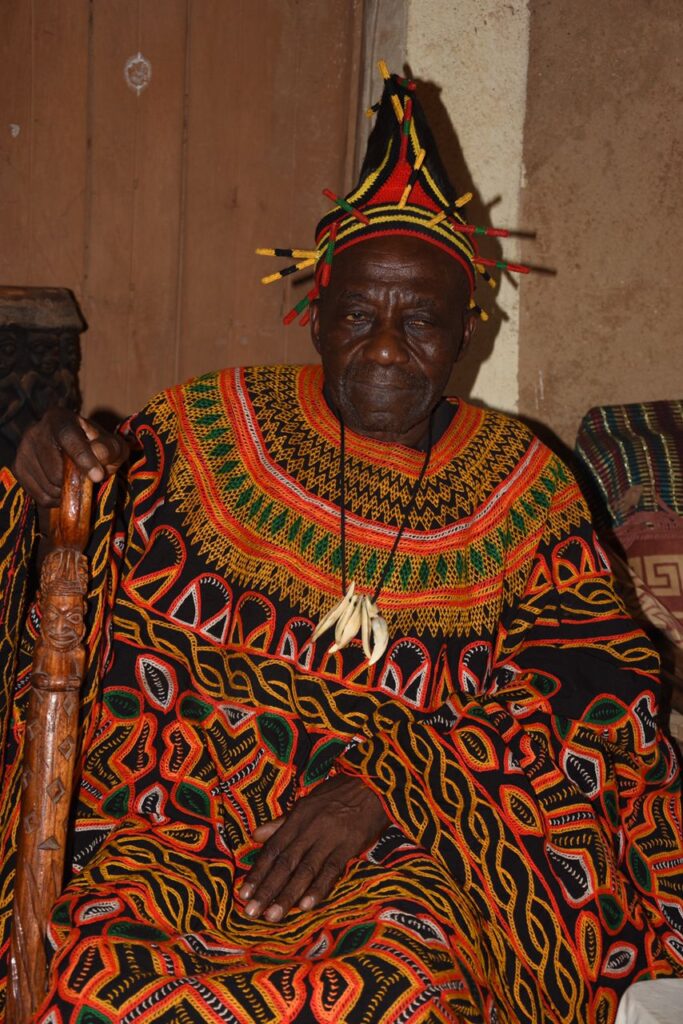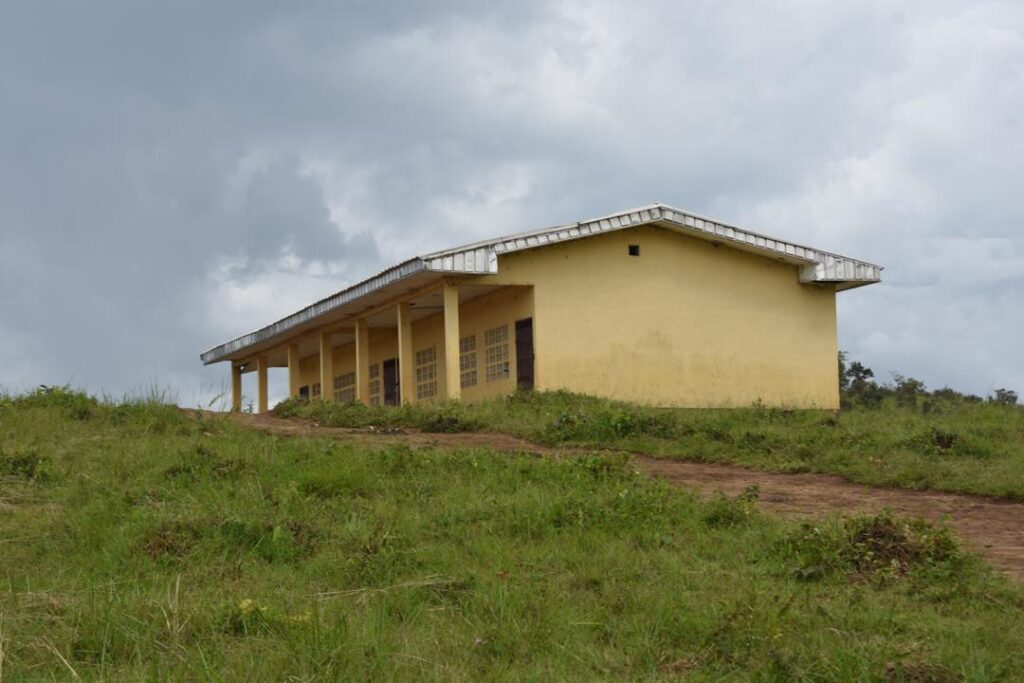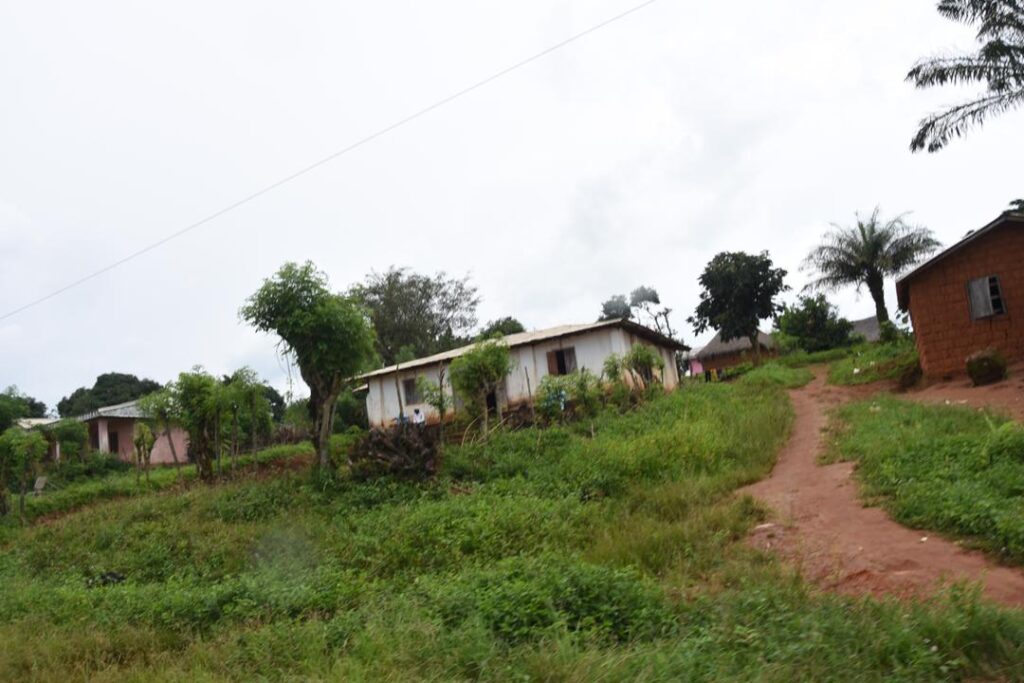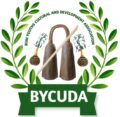
Mungong Fondom (Kingdom)
Brief History of the People
Oral tradition holds that Mungong people are of Tikar descent that migrated and settled temporary in Kikuneji, a village situated towards Dumbu road in Donga Mantung. It is said that there were three brothers called Fio, Twe and Ngong. After life proved to be unfavourable in Kijuneji, they migrated to present day Fonfuka where the Government Primary School is located. After staying for some time without a leader, Fuka became their leader and misundertsing let to their further disperesement. Fio left and settled in present day Fio village, Twing went and settled in Mbamlu and Ngong remained in Fonfuka. The name Fonfuka is derived from Fuka, which means the Fon Fuka (King Fuka). Ngong and others later left and settled around the Mungong Forest. Mungong (someone from) derives its name from Ngong (one of the early settlers in Mungong). While at the Mungong forest, they were advised by the then Divisional Officer for Wum in 1968 to move and settled in their present settlement in order to benefit from the advantages that will come with the ring road (Fonfuka CPD, 2011).
Mungong, with a population of approximately 7,000 residents comprising both indigenous locals and Fulani ethnic groups, occupies a strategically significant position. Serving as the gateway to Bum Subdivision from Donga and Mantung Divisions, Mungong holds pivotal geographical importance. Despite its strategic location, Mungong stands out as the least developed village in the subdivision concerning infrastructure. Nonetheless, the people of Mungong are known for their hospitality and a strong sense of pride. They consistently seek recognition wherever they traverse.
Previously, the chieftaincy in Mungong was held by the BOGBABIEH’S Family. Amidst disputes over succession, attempts were made to quell tensions. Ultimately, an agreement was reached to transfer the chieftaincy to the Bonbateh’s Family, with the provision that they could be replaced at any time. The first chief, known as Fon Nicodemous Tenku I, assumed the position in 1901 until his passing in December 1959. Following his tenure, Fon Samuel Musong Tenku II succeeded him in January 2003. The current chief, Fon Charles Tah, ascended to the throne in March 2004, succeeding Fon Samuel Musong Tenku.
The Kingdom has a population of approximately 7,000 residents comprising natives and Fulanis and occupies a strategically significant location. Serving as the gateway to Bum Subdivision from Donga and Mantung Divisions, Mungong is nevertheless the least developed village in the subdivision in terms of infrastructure (Fonfuka CDP, 2011).
Socio-cultural life
Socio-culturally, the village’s culture and customs remain distinctive within the Bum clan. Its language bears similarities to the Noni language. The foremost traditional dance, originating from the village, is KILA, followed by Kiyung and Kingaye. Additionally, we have Mungong and Kinoko traditional dances, reserved for special occasions such as the enthronement or passing of a sub-chief or chief. Noteworthy women’s dances include FUBUEN, NJANG, and YEAH. Among the men’s dances are Ndong Kuso and Kwifon, while Mungong serves as a means to uphold internal peace and discipline within the village. External peace is maintained through administrative means.
Economic life
Mungong is primarily an agricultural area with few to no commercial establishments. Its population consists of both natives and Fulanis. The residents earn their livelihood through the cultivation and sale of cash crops, food crops, and livestock.
Touristic Potentials
The Kingdom has a good number of touristic potentials. These potentials are both material and immaterial. Material potentials include rocks, artifacts, and bridges. Immaterial potentials are cultural dances such as Kila, Mungong, Kinoko (performed only during the enthronement of a King), Kiyung and Kingaye.


